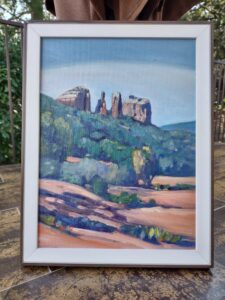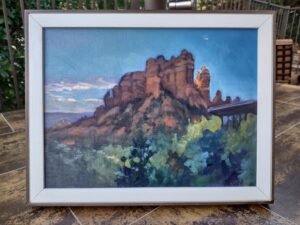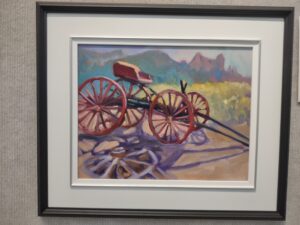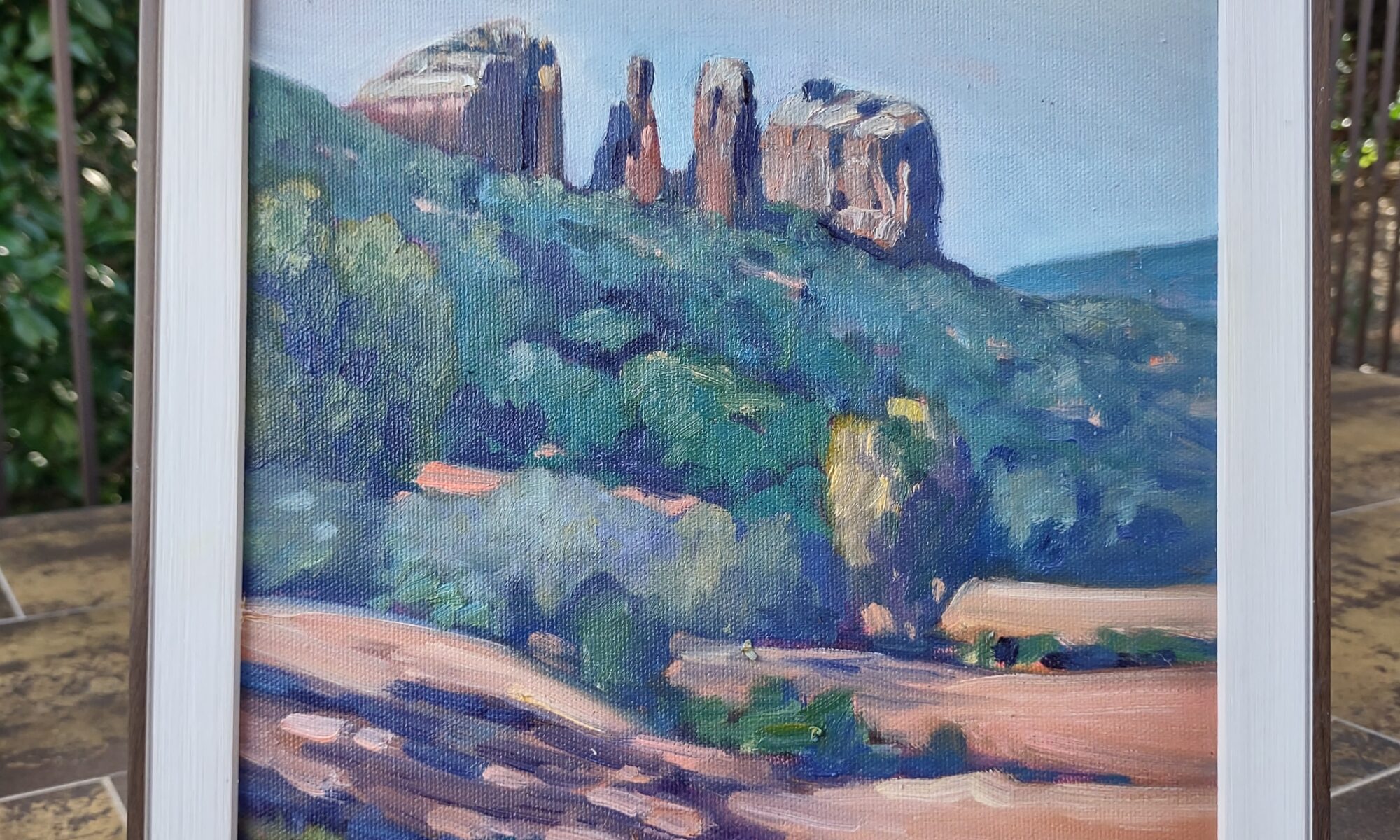
I’m in Sedona, AZ for the 18th annual Sedona Plein Air Festival. My friend Jennifer mocks my packing list as unnecessarily exhaustive. However, it’s meant to be a complete list from which you choose what’s appropriate. For example, I bring foul-weather gear on my schooner workshops, but not dress clothes. This week, I brought a dress but no foul-weather gear. True to form, it rained yesterday.
“That’s all just materials and tools,” I hastened to tell a woman at the airport who watched me struggle with two large suitcases and a carry-on, her lips pursed. “Do I look like a person who owns three suitcases full of clothing?”

At home I drive a full-size pickup truck and have more than 500 square feet of studio space. Here, my tools are crammed into a rental car. I don’t have the luxury of bringing everything I might want.
Travel is always a compromise between canvas size and practicality. I like to paint big, but the largest thing I can pack in a suitcase is 16/20 (in a very narrow frame). I’m carrying four sizes here in Sedona (16/20, 11/14, 9/12, and 8/16) and that’s too many. The less variation in size, the easier it is to pack.
Every art material comes with a Safety Data Sheet (SDS), an exhaustive document that is, for the most part, irrelevant to you as an artist. What matters is the flash point, which is in section nine, Physical and Chemical Properties. This tells you what you can and cannot fly with. A flash point at or below 140° F (60° C) indicates it is a flammable liquid and may not be carried in airline baggage.

You’ll have to hunt, but all vendors are required to provide SDS for every product.
Not all solvents are created equal. Turpenoid has a flash point of 129° F (54° C), so it can’t fly. Gamsol’s flash point is 144°F (62°C) so it’s safe. I buy a fresh pint and wrap it in its SDS with the flash point highlighted.
My favorite painting medium (Grumbacher Quick Dry) has a flash point of 140° F, meaning it can’t fly. After buying countless bottles of it after the road that were ditched after using only a few drops, I switched to using linseed oil as a medium. That sacrifices dry time for convenience, but it hasn’t been a problem. Again, I wrap the bottle in its SDS with the flash point (500° F) highlighted.
A small tube of oil paint is 37 ml. or 1.25 oz, so is safe for your carry-on. A large tube is 150 ml., or 5 oz. It must be checked or it will be confiscated. I pack this handy label with my oil paints. Watercolor tubes are tiny and harmless, but the only trouble I’ve ever had flying with paints was with watercolors. An inspector at Heathrow dumped them back into my checked luggage without putting them in their plastic container. My clothes were stained on my return home.

It’s very easy to forget your brushes in the heat of travel, and dried brushes are unredeemable. If you can do nothing else, rinse them thoroughly in solvent and wipe them down until you can treat them properly.
Most accommodations don’t have utility sinks. I sometimes take my brushes into the shower, where the force of the water clears away all lingering pigments. That’s not practical in places where water is a luxury. There, I use a superfatted soap and clean all residue from the sink when I’m done.
There are a number of portable painting racks, including RayMar’s DryAngle, but when painting in a festival, I simply snap the painting into its frame. If it doesn’t sell, it can travel home like that. Unframed work gets separated with waxed paper, taped together, and packed in my checked luggage. As long as the paint isn’t too thick, it won’t be harmed.

